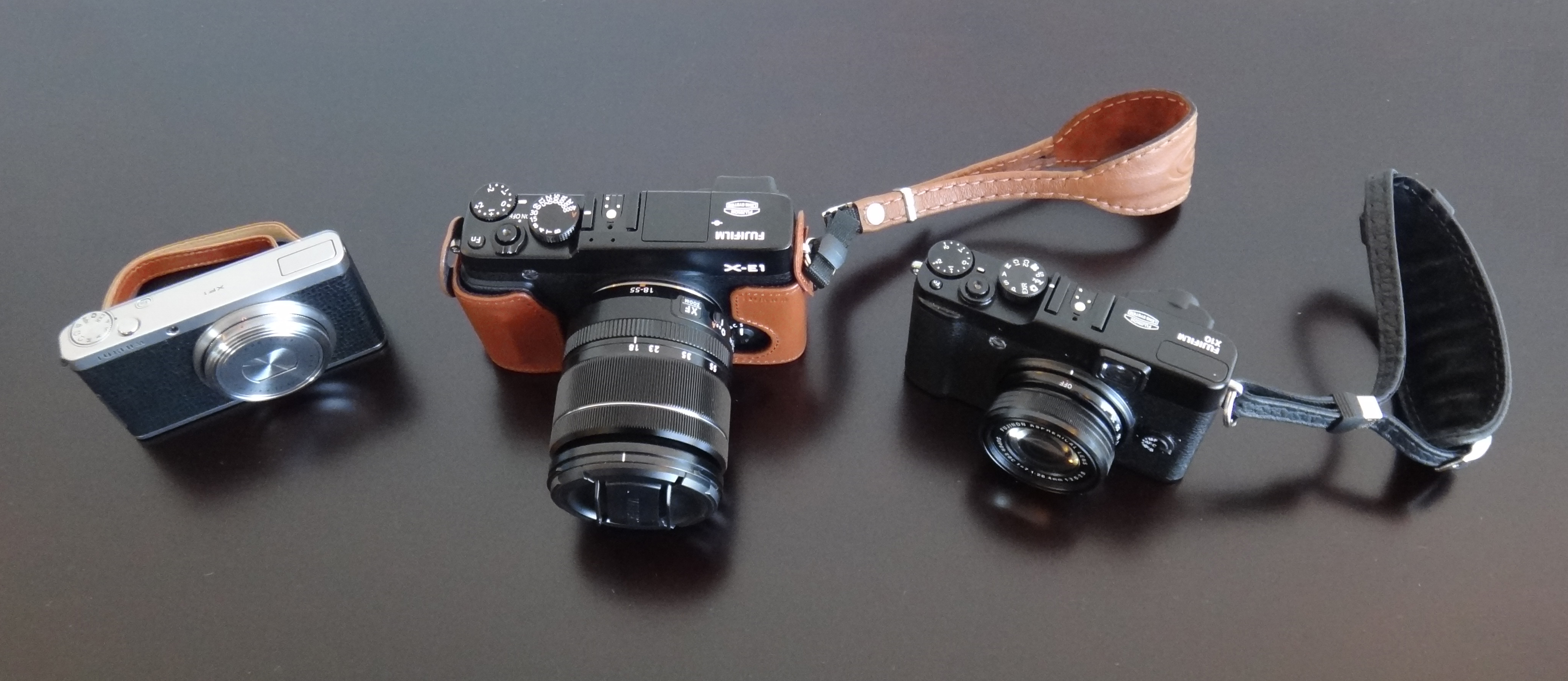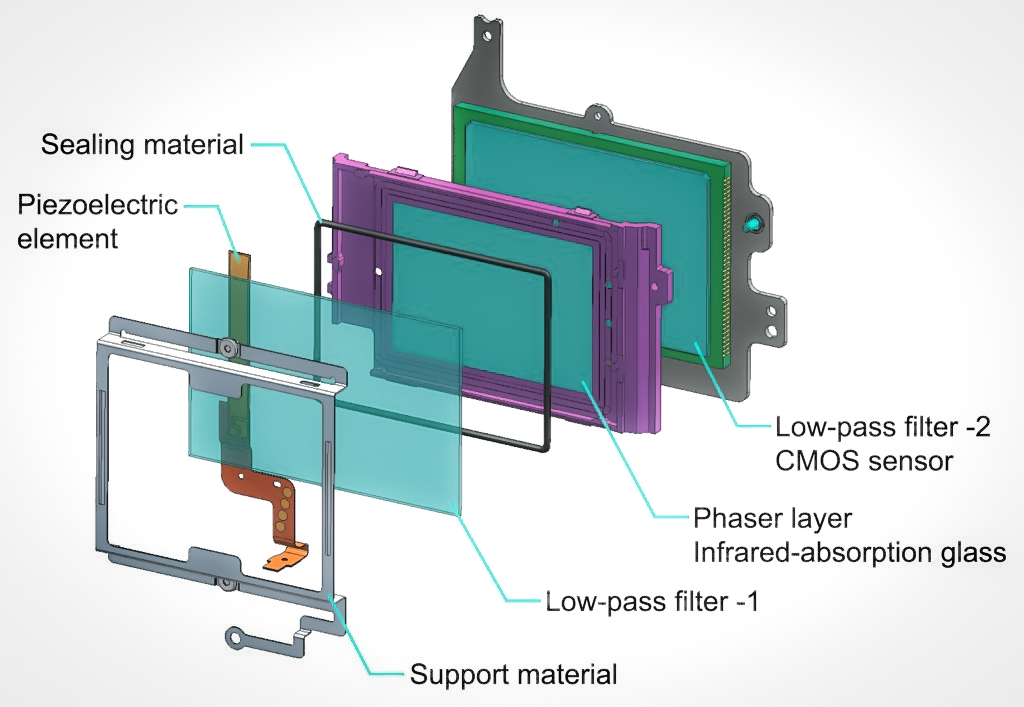|
Fujifilm X-Pro1
The Fujifilm X-Pro1 is a Mirrorless interchangeable-lens camera, mirrorless interchangeable-lens digital camera announced in January 2012 and launched in March 2012. It is part of Fujifilm, Fujifilm's Fujifilm X-series, X-Series of cameras. In October 2012 Fujifilm released a very similar, yet smaller, camera named the Fujifilm X-E1, X-E1. In January 2016 Fujifilm announced its successor, the Fujifilm X-Pro2, X-Pro2. Key features * 16-megapixel, APS-C sized "X-Trans" CMOS sensor * Compatible with the Fujifilm X-mount system of lenses * 2nd generation Hybrid Viewfinder * Through-the-lens metering, TTL Hot Shoe and Sync Terminal Fujifilm "X-Trans" CMOS sensor The Fujifilm X-Trans CMOS sensor used in the X-Pro1 (and other Fuji X-series cameras) is claimed to provide higher resolution than full-frame sensors, and also produce better colour reproduction. Anti-aliasing filters are used on standard Bayer Array Sensors to reduce moire pattern, moiré effect when shooting regular ... [...More Info...] [...Related Items...] OR: [Wikipedia] [Google] [Baidu] |
Fujifilm X-series
The Fujifilm X series is a line of digital cameras produced by Fujifilm. The series encompasses fixed lens and interchangeable lens mirrorless cameras and premium compact point-and-shoot cameras aimed at consumer, enthusiast and professional photographers. The X series is part of the larger Fujifilm FinePix, FinePix range of digital cameras from Fujifilm. The X series models use either APS-C or inch sensors. X series model lines Since its introduction with the X100 in 2011, the X series has grown to encompass a wide variety of designs. These lines can be broken out into the following categories or model lines. APS-C sensor The following lines are united by their use of APS-C-sized sensors measuring 25.1×16.7 mm, with an aspect ratio of 3:2 and Ø31.15 mm field diameter. They are listed here within each category in the order in which the initial model of each type was introduced. Fixed lens * X100 line — These models have a fixed focal length 23mm prime len ... [...More Info...] [...Related Items...] OR: [Wikipedia] [Google] [Baidu] |
Fujifilm
, trading as Fujifilm, or simply Fuji, is a Japanese multinational conglomerate headquartered in Tokyo, Japan, operating in the realms of photography, optics, office and medical electronics, biotechnology, and chemicals. The offerings from the company that started as a manufacturer of photographic films, which it still produces, include: document solutions, medical imaging and diagnostics equipment, cosmetics, pharmaceutical drugs, regenerative medicine, stem cells, biologics manufacturing, magnetic tape data storage, optical films for flat-panel displays, optical devices, photocopiers and printers, digital cameras, color films, color paper, photofinishing and graphic arts equipment and materials. Fujifilm is part of the Sumitomo Mitsui Financial Group financial conglomerate (''keiretsu''). History 20th century Fuji Photo Film Co., Ltd. was established in 1934 as a subsidiary of Daicel with the aim of producing photographic films. Over the following 10 years, the comp ... [...More Info...] [...Related Items...] OR: [Wikipedia] [Google] [Baidu] |
Mirrorless Interchangeable Lens Camera
A mirrorless camera is a photo camera featuring a single, removable lens and a digital display. The camera does not have a reflex mirror or optical viewfinder like a digital single-lens reflex (DSLR) camera, but may have an electronic viewfinder. Many mirrorless cameras retain a mechanical shutter. Like a DSLR, a mirrorless camera accepts any of a series of interchangeable lenses compatible with its lens mount. Terminology Mirrorless cameras are sometimes referred to as mirrorless interchangeable-lens cameras (MILC), or digital single-lens mirrorless (DSLM) cameras. This latter name highlights their connection to DSLRs. Other terms include electronic viewfinder interchangeable lens (EVIL) cameras and compact system cameras (CSCs). Overview Mirrorless cameras are mechanically simpler than DSLR cameras, and are smaller, lighter, and quieter due to the elimination of the moving mirror. While nearly all mirrorless cameras have a mechanical shutter, many also have an elect ... [...More Info...] [...Related Items...] OR: [Wikipedia] [Google] [Baidu] |
Fujifilm X-mount
The Fujifilm X-mount is a type of interchangeable lens mount designed by Fujifilm for use in those cameras in their X-series line that have interchangeable-lenses. These lenses are designed for 23.6mm x 15.6mm APS-C sensors. Various lens manufacturers use this mount, such as Fujifilm's own XF and XC lenses, Carl Zeiss AG (Touit lenses), Samyang Optics, Handevision, SLR Magic, Viltrox and Zhongyi Optics. Additionally, a host of adapters for a range of SLR lenses are available, allowing the mounting of lenses (without autofocus or auto aperture) from Canon, Nikon, Pentax, Minolta, Contax/Yashica, Konica and more. This mount type should not be confused with the discontinued Fujica X-mount, which is not compatible with the newer X-mount without an adapter. Fujifilm X-Mount cameras Fujifilm has released the following cameras that use the X-mount: *Fujifilm X-A1 *Fujifilm X-A2 *Fujifilm X-A3 *Fujifilm X-A5 *Fujifilm X-A7 *Fujifilm X-A10 *Fujifilm X-A20 *Fujifilm X-E1 *Fujifilm X ... [...More Info...] [...Related Items...] OR: [Wikipedia] [Google] [Baidu] |
Autofocus
An autofocus (or AF) optical system uses a sensor, a control system and a motor to focus on an automatically or manually selected point or area. An electronic rangefinder has a display instead of the motor; the adjustment of the optical system has to be done manually until indication. Autofocus methods are distinguished as active, passive or hybrid types. Autofocus systems rely on one or more sensors to determine correct focus. Some AF systems rely on a single sensor, while others use an array of sensors. Most modern SLR cameras use through-the-lens optical sensors, with a separate sensor array providing light metering, although the latter can be programmed to prioritize its metering to the same area as one or more of the AF sensors. Through-the-lens optical autofocusing is usually speedier and more precise than manual focus with an ordinary viewfinder, although more precise manual focus can be achieved with special accessories such as focusing magnifiers. Autofocus accuracy ... [...More Info...] [...Related Items...] OR: [Wikipedia] [Google] [Baidu] |
Fujifilm X-Pro2
The Fujifilm X-Pro2 is a mirrorless interchangeable-lens digital camera announced in January 2016. It is part of Fujifilm's X-Series of cameras, the successor to the X-Pro1. Sales began on 3 March 2016. The X-Pro2 is the first mirrorless interchangeable-lens camera to have dual SD card slots. Fujifilm made some changes to the layout from the X-Pro1 and added a joystick. The X-Pro2 jointly won a Camera Grand Prix Japan 2016 Editors Award. The successor to the X-Pro2 is the Fujifilm X-Pro3 announced in October 2019. Features The Fujifilm X-Pro2 mirrorless camera is aimed at professional and ambitious amateur photographers. The camera body has a X mount for connecting Fujinon XF and XC lenses. The autofocus system works as a hybrid using contrast and phase detection, this allows focusing and release within 0.15 to 0.25 seconds from infinity to two meters. For manual focusing, a focus magnifier, a digital split image indicator as well as focus peaking are available to the use ... [...More Info...] [...Related Items...] OR: [Wikipedia] [Google] [Baidu] |
Mirrorless Interchangeable-lens Camera
A mirrorless camera is a photo camera featuring a single, removable lens and a digital display. The camera does not have a reflex mirror or optical viewfinder like a digital single-lens reflex (DSLR) camera, but may have an electronic viewfinder. Many mirrorless cameras retain a mechanical shutter. Like a DSLR, a mirrorless camera accepts any of a series of interchangeable lenses compatible with its lens mount. Terminology Mirrorless cameras are sometimes referred to as mirrorless interchangeable-lens cameras (MILC), or digital single-lens mirrorless (DSLM) cameras. This latter name highlights their connection to DSLRs. Other terms include electronic viewfinder interchangeable lens (EVIL) cameras and compact system cameras (CSCs). Overview Mirrorless cameras are mechanically simpler than DSLR cameras, and are smaller, lighter, and quieter due to the elimination of the moving mirror. While nearly all mirrorless cameras have a mechanical shutter, many also have an electr ... [...More Info...] [...Related Items...] OR: [Wikipedia] [Google] [Baidu] |
Fujifilm X-E1
The Fujifilm X-E1 is a digital rangefinder-style mirrorless camera announced by Fujifilm on September 6, 2012. It is the second camera announced for Fujifilm's X-system, after the Fujifilm X-Pro1 The Fujifilm X-Pro1 is a Mirrorless interchangeable-lens camera, mirrorless interchangeable-lens digital camera announced in January 2012 and launched in March 2012. It is part of Fujifilm, Fujifilm's Fujifilm X-series, X-Series of cameras. In Oc .... The X-E1 is a slimmed-down version of X-Pro1. The modifications include removal of expensive hybrid finder replaced by an upgraded electronic viewfinder. New EVF uses a 2.36M dot OLED unit, out-speccing the X-Pro1's 1.44M dot LCD finder. References *http://www.dpreview.com/products/fujifilm/slrs/fujifilm_xe1/specifications X-E1 Cameras introduced in 2012 {{camera-stub ... [...More Info...] [...Related Items...] OR: [Wikipedia] [Google] [Baidu] |
Through-the-lens Metering
In photography, through-the-lens metering (TTL metering) refers to a feature of cameras whereby the intensity of light reflected from the scene is measured through the lens; as opposed to using a separate metering window or external hand-held light meter. In some cameras various TTL metering modes can be selected. This information can then be used to set the optimal film or image sensor exposure ( average luminance), it can also be used to control the amount of light emitted by a flash unit connected to the camera. Description Through-the-lens metering is most often associated with single-lens reflex (SLR) cameras. In most film and digital SLRs, the light sensor(s) for exposure metering are incorporated into the pentaprism or pentamirror, the mechanism by which a SLR allows the viewfinder to see directly through the lens. As the mirror is flipped up, no light can reach there during exposure, the necessary amount of exposure needs to be determined before the actual exposure. Consequ ... [...More Info...] [...Related Items...] OR: [Wikipedia] [Google] [Baidu] |
Hot Shoe
Canon EOS 350D Hot shoe Proprietary hot shoe used by Minolta and older Sony cameras (Konica Minolta Maxxum 7D">Sony.html" ;"title="Minolta and older Sony">Minolta and older Sony cameras (Konica Minolta Maxxum 7D) A hot shoe is a mounting point on the top of a camera to attach a flash (photography), flash unit and other compatible accessories. It takes the form of an angled metal bracket surrounding a metal contact point which completes an electrical connection between camera and accessory for standard, brand-independent flash synchronization. The hot shoe is a development of the standardised "accessory shoe", with no flash contacts, formerly fitted to cameras to hold accessories such as a rangefinder, or flash connected by a cable. The dimensions of the hot shoe are defined by the International Organization for Standardization in ISO 518:2006. Details such as trigger voltage are not standardised; electrical incompatibilities are still possible between brands. Design The h ... [...More Info...] [...Related Items...] OR: [Wikipedia] [Google] [Baidu] |
Anti-aliasing Filter
An anti-aliasing filter (AAF) is a filter used before a signal sampler to restrict the bandwidth of a signal to satisfy the Nyquist–Shannon sampling theorem over the band of interest. Since the theorem states that unambiguous reconstruction of the signal from its samples is possible when the power of frequencies above the Nyquist frequency is zero, a brick wall filter is an idealized but impractical AAF. A practical AAF makes a trade off between reduced bandwidth and increased aliasing. A practical anti-aliasing filter will typically permit some aliasing to occur or attenuate or otherwise distort some in-band frequencies close to the Nyquist limit. For this reason, many practical systems sample higher than would be theoretically required by a perfect AAF in order to ensure that all frequencies of interest can be reconstructed, a practice called oversampling. Optical applications The Pentax K-3 from Ricoh introduced a unique sensor-based anti-aliasing filter. The filter ... [...More Info...] [...Related Items...] OR: [Wikipedia] [Google] [Baidu] |



.jpg)
